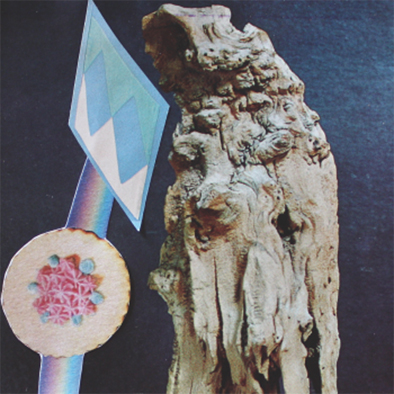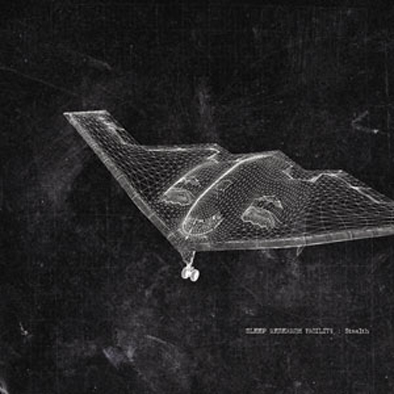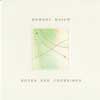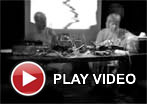Recorded live at the Oslo Jazz Festival in 2010, Slugfield is a trio of Lasse Marhaug, Maja S.K. Ratkje, and Paal Nilssen-Love, three artists who would rarely have the "j" genre applied to them. The five tracks that make up this improvisation aren't jazzy in the traditional sense, but instead channel that combination of chaotic sonic freedom and moments where the artists lock together as a singular, three headed noise making beast.
Two new shows just for you. We have squeezed out two extended release episodes for this weekend to get you through this week. They contain mostly new songs but there's also new issues from the vaults. The first show features music from Rider/Horse, Mint Field, Robert Aiki Aubrey Lowe, Anastasia Coope, ISAN, Stone Music, La Securite, Bark Psychosis, Jon Rose, Master Wilburn Burchette, Umberto, Wand, Tim Koh, Sun An, and Memory Drawings. The second episode has music by Laibach, Melt-Banana, Chuck Johnson, X, K. Yoshimatsu, Dorothy Carter, Pavel Milyakov, Violence Gratuite, Mark Templeton, Dummy, Endon, body / negative, Midwife, Alberto Boccardi, Divine. Cow in Maui from Veronika in Vienna. Get involved: subscribe, review, rate, share with your friends, send images! |



 Aaron Turner and Faith Coloccia's more esoteric, less traditionally "metal" side label Sige has been responsible for some unexpected, but brilliant pieces of dark sonic exploration in recent years, but with this LP, the most unexpected is simply how normal it sounds. Although lyrically it is as dark and sinister as any metal album, the airy feminine vocals of bassist Sera Timms and drummer Kelly Johnston enshroud it with a certain gauzy bliss that belies its dark content.
Aaron Turner and Faith Coloccia's more esoteric, less traditionally "metal" side label Sige has been responsible for some unexpected, but brilliant pieces of dark sonic exploration in recent years, but with this LP, the most unexpected is simply how normal it sounds. Although lyrically it is as dark and sinister as any metal album, the airy feminine vocals of bassist Sera Timms and drummer Kelly Johnston enshroud it with a certain gauzy bliss that belies its dark content. Although my initial enthusiasm for this project has been dampened somewhat by Rachel Evans' deluge of similar-sounding releases, her ambitious and divergent debut for Editions Mego's Spectrum Spools imprint demonstrates that she still has some tricks up her sleeve.  While her characteristic layers of gauze-y, ethereal vocals have not vanished entirely, they are unexpectedly infrequent and rarely take center stage.  Instead, this sprawling double-album plunges headlong into burbling, drifting, and subtly hallucinatory synth-based psychedelia and stays there for a pleasantly long time.
Although my initial enthusiasm for this project has been dampened somewhat by Rachel Evans' deluge of similar-sounding releases, her ambitious and divergent debut for Editions Mego's Spectrum Spools imprint demonstrates that she still has some tricks up her sleeve.  While her characteristic layers of gauze-y, ethereal vocals have not vanished entirely, they are unexpectedly infrequent and rarely take center stage.  Instead, this sprawling double-album plunges headlong into burbling, drifting, and subtly hallucinatory synth-based psychedelia and stays there for a pleasantly long time. Kevin Doherty has long been one of the most quietly compelling artists working in the dark ambient field due to his unusual (and oft-alienating) themes and his inventive artistic purity in realizing them.  This release, which was commissioned by Cold Spring, is constructed entirely from recordings made during the maintenance of a B-2 Stealth Bomber.  While not as objectively impressive as wringing two full albums out of a three-minute recording of a broken heater (Dead Weather Machine) or as musical as his homage to the doomed spaceship in Alien (Nostromo), Stealth is fascinating in its own right and makes a worthy addition to a unique body of work.
Kevin Doherty has long been one of the most quietly compelling artists working in the dark ambient field due to his unusual (and oft-alienating) themes and his inventive artistic purity in realizing them.  This release, which was commissioned by Cold Spring, is constructed entirely from recordings made during the maintenance of a B-2 Stealth Bomber.  While not as objectively impressive as wringing two full albums out of a three-minute recording of a broken heater (Dead Weather Machine) or as musical as his homage to the doomed spaceship in Alien (Nostromo), Stealth is fascinating in its own right and makes a worthy addition to a unique body of work. Simple, haunting, and frequently plaintive piano music is Robert Haigh's bread and butter. He's a master at making the most out of very little. His career is marked by memorable collaborations with Nurse with Wound, tape shenanigans as Truth Club, pseudo-new age adventures with Silent Storm, and numerous other projects, but his best music is undoubtedly for solo piano. Notes and Crossings is ostensibly a collection of preludes, dances, and improvisations, but the album's collective weight fosters a more cohesive sense. As with much of his work, Haigh's writing here is heavy and introspective, with hints of madness lurking beneath the surface, but it's also immediate and strangely catchy thanks to all the sharp, short, and effective melodies he produces.
Simple, haunting, and frequently plaintive piano music is Robert Haigh's bread and butter. He's a master at making the most out of very little. His career is marked by memorable collaborations with Nurse with Wound, tape shenanigans as Truth Club, pseudo-new age adventures with Silent Storm, and numerous other projects, but his best music is undoubtedly for solo piano. Notes and Crossings is ostensibly a collection of preludes, dances, and improvisations, but the album's collective weight fosters a more cohesive sense. As with much of his work, Haigh's writing here is heavy and introspective, with hints of madness lurking beneath the surface, but it's also immediate and strangely catchy thanks to all the sharp, short, and effective melodies he produces.

 At first, this fourth entry in Neubauten’s long running compilation series looks like a waste of money for those who have been following their online supporter projects and a godsend for those who have missed out on the plethora of limited albums the band have produced in the last decade. On closer inspection, while the vast majority of the material exists in some form or other on the original albums, most of the versions here are alternate takes, mixes or live versions. While not a perfect compilation, there is a lot here for new and veteran fans alike.
At first, this fourth entry in Neubauten’s long running compilation series looks like a waste of money for those who have been following their online supporter projects and a godsend for those who have missed out on the plethora of limited albums the band have produced in the last decade. On closer inspection, while the vast majority of the material exists in some form or other on the original albums, most of the versions here are alternate takes, mixes or live versions. While not a perfect compilation, there is a lot here for new and veteran fans alike. Under the guise of Padna, Nat Hawks stormed onto tape label Stunned with Siberia/Hinterland, a mash-up of varied styles that reflected the bustle of a scene fraught with chaos. Hawks has quickly followed up that overachievement with this bigger and more daring release.
Under the guise of Padna, Nat Hawks stormed onto tape label Stunned with Siberia/Hinterland, a mash-up of varied styles that reflected the bustle of a scene fraught with chaos. Hawks has quickly followed up that overachievement with this bigger and more daring release. Pinkcourtesyphone is the not so secret alter ego of renowned sound artist Richard Chartier, and while it seems to be geared more towards a looser, more relaxed sensibility than the serious artist guise that is usually thrust upon him, it lacks none of his careful attention to structure and detail. Quite a bit of the material on this compilation (recorded erratically between 1997 and 2011) could pass for his normal work, but throws enough curve balls to give it a distinct identity all its own.
Pinkcourtesyphone is the not so secret alter ego of renowned sound artist Richard Chartier, and while it seems to be geared more towards a looser, more relaxed sensibility than the serious artist guise that is usually thrust upon him, it lacks none of his careful attention to structure and detail. Quite a bit of the material on this compilation (recorded erratically between 1997 and 2011) could pass for his normal work, but throws enough curve balls to give it a distinct identity all its own.
